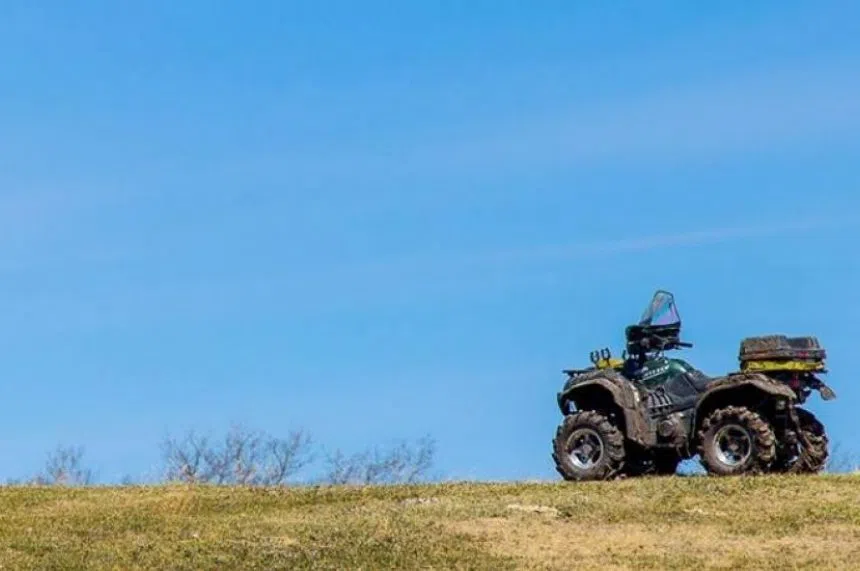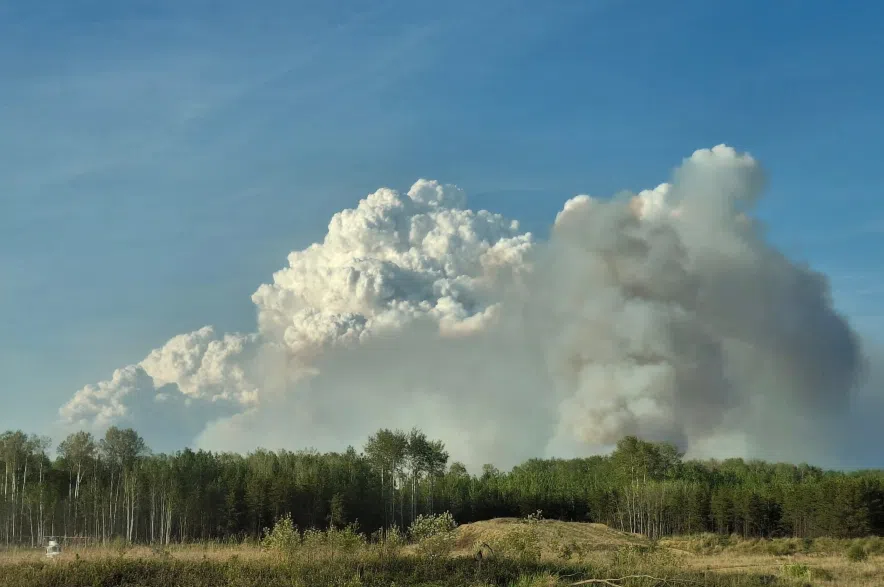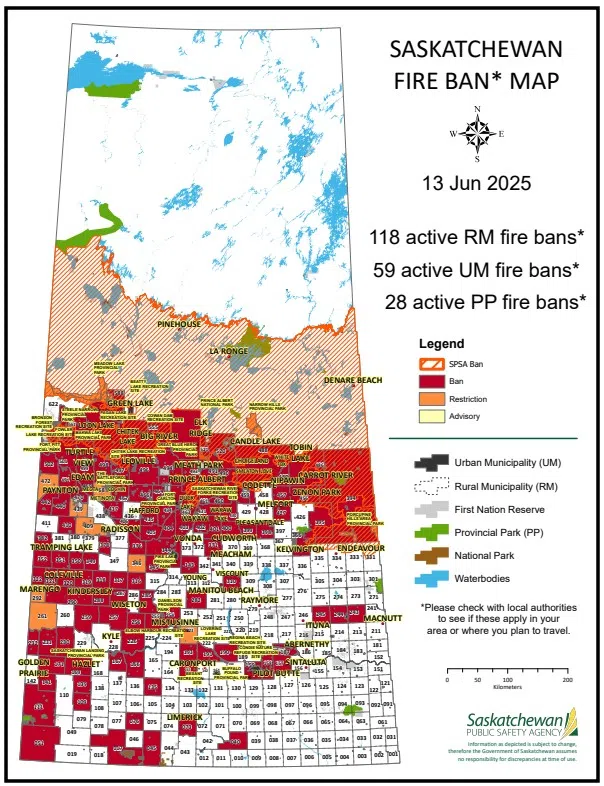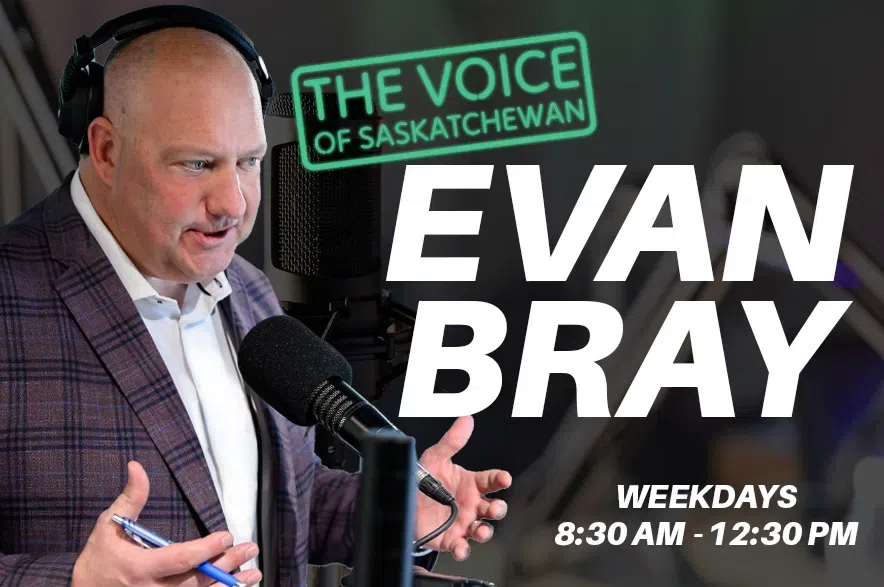Things continue to slowly but surely look up for the wildfire situation in Saskatchewan.
According to Saskatchewan Public Safety Agency (SPSA), the vast majority of evacuated people have returned or have begun the journey home — it said around 10,300 evacuees.
Only five communities remain under an evacuation order: Creighton, Denare Beach, East Trout Lake, Whelan Bay, and P1 and P2 in Cumberland House.
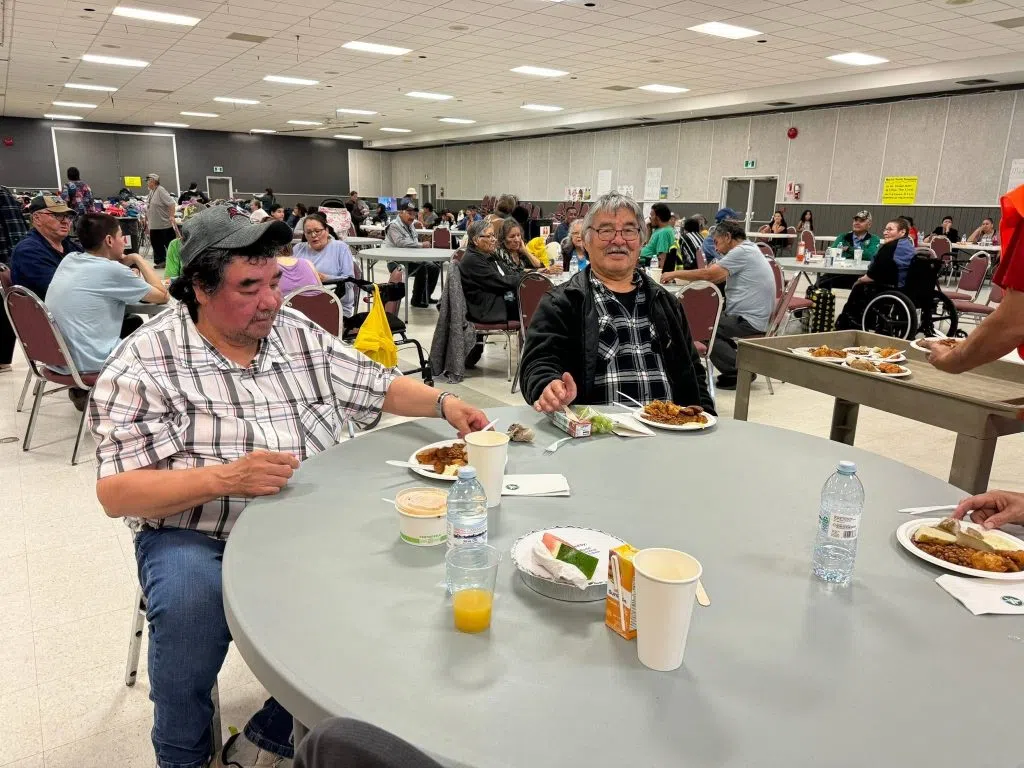
Evacuees filled the Prince Albert Exhibition Centre with laughter and cheer at lunchtime. (Tommy Bird/Submitted)
Efforts on the ground continue to be positive as well.
“We are in a stronger position today than we have been in previous days,” Premier Scott Moe said. “Much of that is due to the effort and the work of our firefighters on the ground.”
Read more:
- Saskatchewan fisherman feeds wildfire evacuees with a taste of home
- Saskatchewan raises $643,156 in one day for wildfire relief
- Evacuees return home, La Ronge Health Centre slowly re-opens
Marlo Pritchard, President and Fire Commissioner with SPSA, said cooler weather paired with rain in the forecast has allowed crews to continue to fight fires from an offensive approach rather defensive.
Thanks to some of these positives, SPSA has decided to lift the ATV/UTV ban across the province.
“We continue to see cloudy, cool weather so, based on the totality of the situation, we believe that the risk for ATVs has been reduced and those ATVs can be used safely, although with caution,” Pritchard said.
However, he asks anyone using ATVs to avoid active fire lines.
Residents of Candle Lake have also received some good news: the voluntary evacuation advisory has been lifted.
The community decided to lift the advisory through consultations with SPSA, saying that the Shoe Fire is no longer an immediate threat to the area.
Despite the good news, Moe said the province will not be looking to lift the province’s state of emergency, as a number of communities are still evacuated and some have experienced immense loss.
“We mustn’t forget that there are people who lost their homes and, not that that’s relevant to a state of emergency, it is for them and it is for the province,” Moe said.
“We’re going to have to chart a path on how they are supported in the weeks and likely months ahead, until we can rebuild a community like Denare Beach or East Trout Lake.”
According to SPSA, the state of emergency allows for extra powers if needed.
“There’s still a lot of work to do in the coming days and coming weeks, but we will continue to assess that,” Pritchard said.
“I’ll assess that with my minister and, if the situation changes for the better faster than anticipated, those changes can be made.”
Rain expected for much of the province
Much of Saskatchewan should see some wet weather this weekend, with a system moving in from Alberta.
Crawford Luke, an Environment and Climate Change Canada meteorologist, said thundershowers should begin on and off on Saturday afternoon and extend into Sunday evening.
“I would say overall it is looking like a wet weekend in that fire region,” he said. “So hopefully that holds —and it’s good news.”
Luke expects to see rainfall amounts totalling 10 to 20 millimetres by Monday morning.
While this week has seen poor air quality, Luke said people should be getting a reprieve from smoky skies.
“Right now, we’re seeing winds out of the south, and that looks like it’s going to continue through much of the weekend, he said.
“A lot of the smoke we were seeing across southern Saskatchewan has actually already cleared up to the north.”
With the expected rain, SPSA said it will take a look at fire bans on Monday and could make further adjustments.
Fires in Saskatchewan on June 13
As of 2:30 p.m., 19 active fires were burning in Saskatchewan on June 13.
The SPSA website shows that four of those blazes were not contained, while another eight of the fires were under ongoing assessment and firefighters were protecting values in two. Four fires were considered contained.
Contained means suppression action is taking place and the fire is not expected to grow in size, ongoing assessment means the fire is being monitored regularly to assess risk to values in the area and not contained means suppression action is taking place but the fire is expected to grow in size, according to SPSA. Protecting values means a fire is active and action is focused on protecting things like cabins and infrastructure.
As well, fire bans are active in 59 urban municipalities, 118 rural municipalities and 28 provincial parks in the province, with the fire danger considered high to extreme for much of the province.
This year, Saskatchewan has had 259 wildfires, which is well above the five-year average of 148 to date.
Of these fires, around44 have been caused by lightning. The remaining fires are human-caused and can be categorized by the following:
- Recreation: A wildfire caused by people or equipment engaged in recreational activities such as fishing, picnicking, hiking or quadding.
- Resident: A wildfire resulting from activities performed by people or machines for agriculture or an accidental fire caused by activity associated with normal living in a forested area.
- Industry: A wildfire that is caused by an industrial activity such as land clearing, harvesting or power distribution.
- Incendiary: A device used to cause a wildfire for the purpose of mischief, also called arson.
Most human-caused fires are accidental. At this time, SPSA believes around 30 fires have been intentionally set.
— with files from 980 CJME’s Gillian Massie, paNOW
